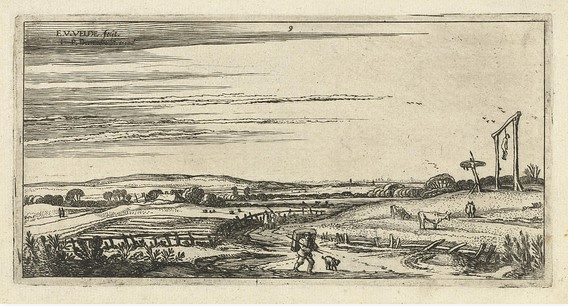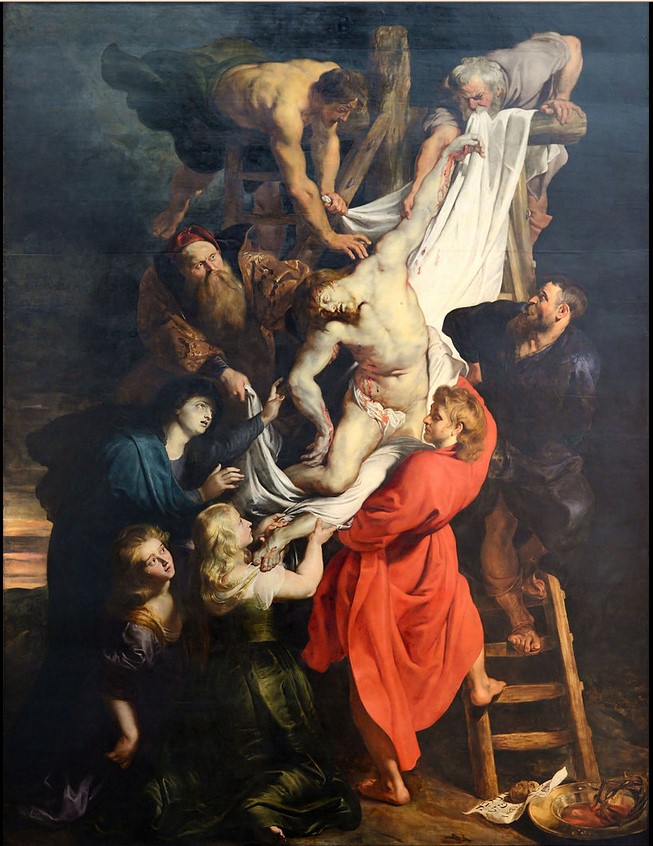Apr 26, 2022
In Platemark e2e18, Tru Ludwig and Ann Shafer begin a three-parter about the master of etching, Rembrandt van Rijn. In this first episode on RvR, Tru sets the stage and takes us through some of Rembrandt's key landscape etchings, including the iconic The Three Trees. (The second episode looks at genre—scenes of everyday life—and portraiture; the third looks at religious imagery.)
It’s funny, but every landmark in the history of prints seems like a reaction against what came before it. Remember, we really haven't seen anyone take up etching with this much success so far. It’s been engraving and woodcut until now with very few exceptions. Don’t get me wrong, I love a good reproductive engraving (witness the last episode on Hendrick Goltzius). But the shift from those formulaic, highly structured images to the flowing and sketchy lines of Rembrandt is huge. And it sets the bar for and forever changes what we mean by autographic etching.
Plus, remember how subject matter has shifted due to the Protestant Reformation, which called for a ban on idolatrous images. Yes, there are still religious images being made—the Catholic Church is still a major patron. But it’s no wonder landscapes, genre scenes, portraits, and still lifes become a thing, especially in Protestant countries like the northern part of the Netherlands (which would become Holland), where Rembrandt lived his whole life.
Episode image: Rembrandt (Dutch, 1606–1669). The Three Trees, 1643. Etching, engraving, and drypoint. Plate: 8 3/8 x 10 15/16 in. (21.3 x 27.8 cm.); sheet: 8 3/8 x 11 1/8 in. (21.3 x 28.3 cm.). Metropolitan Museum of Art, New York.
Pieter Jansz. Saenredam (Dutch, 1597–1665). Interior of St.
Bavo’s, Haarlem, 1633. Oil on panel. 39.3 x 33.6 cm.
Kelvingrove Art Gallery and Museum, Glasgow.
Esaias van de Velde (Dutch, 1587–1630). Landscape with Gallows
near Haarlem, 1610–30. Etching and engraving. Sheet: 3 3/8 x 6
13/16 in. (8.6 x 17.3 cm.). Metropolitan Museum of Art, New
York.
Jacob van Ruisdael (Dutch, c. 1629–1682). View of Haarlem with
Bleaching Fields, c. 1670–75. Oil on canvas. 62.2 × 55.2 cm.
(24 ½ × 21 5/8 in.). Kunsthaus Zurich, Zurich.
Caravaggio, Conversion of Saint Paul, 1600–01. Oil on
panel. 237 × 189 cm. (93 × 74 in.). Odescalchi Balbi Collection,
Rome.
Rembrandt (Dutch, 1606–1669). The Anatomy Lesson of Dr.
Nicolaes Tulp, 1632. Oil on canvas. 216.5 × 169 ½ cm. (85 1/4
× 66 5/8 in.). Mauritshuis, The Hague.

Peter Paul Rubens (Flemish, 1577–1640). The Descent from the
Cross, 1612–14. Oil on panel. 420.5 × 320 cm. (165 1/2 × 130
in.). Cathedral of Our Lady, Antwerp.
Lucas Vorsterman I (Flemish, 1595–1675), after Peter Paul Rubens
(Flemish, 1577–1640). The Descent from the Cross, 1620.
Engraving. 567 x 430 mm. Victoria and Albert Museum, London.
Rembrandt (Dutch, 1606–1669). The Descent from the Cross,
1650/52. Oil on canvas. 142 x 110.9 cm (55 7/8 x 43 11/16 in.).
National Gallery of Art, Washington, D.C.
Rembrandt (Dutch, 1606–1669). The Descent from the Cross,
1633. Etching. Sheet: 20 9/16 x 15 1/16 in. (52.2 x 38.3 cm.).
Metropolitan Museum of Art, New York.
Rembrandt (Dutch, 1606–1669). View of Amsterdam from the
Northwest, c. 1640. Etching. Plate: 4 7/16 x 6 in. (11.2 x
15.2 cm.); sheet: 4 3/4 x 6 1/4 in. (12 x 15.8 cm.). Metropolitan
Museum of Art, New York.
Rembrandt (Dutch, 1606–1669). The Windmill, 1641. Etching.
Sheet: 5 7/8 x 8 5/16 in. (15 x 21.1 cm.). Metropolitan Museum of
Art, New York.
Rembrandt (Dutch, 1606–1669). The Three Trees, 1643.
Etching, engraving, and drypoint. Plate: 8 3/8 x 10 15/16 in. (21.3
x 27.8 cm.); sheet: 8 3/8 x 11 1/8 in. (21.3 x 28.3 cm.).
Metropolitan Museum of Art, New York.
Rembrandt (Dutch, 1606–1669). Six’s Bridge, 1645. Etching.
Plate: 13 x 22.4 cm. (5 1/8 x 8 13/16 in.); sheet: 13.9 x 23.6 cm.
(5 1/2 x 9 5/16 in.). National Gallery of Art, Washington, D.C.
Rembrandt (Dutch, 1606–1669). The Goldweigher’s Field,
1651. Etching and drypoint. Sheet (trimmed to platemark): 121 x 320
mm. (4 ¾ x 12 ½ in.). British Museum, London.
Rembrandt (Dutch, 1606–1669). The Shell, 1650. Etching.
Plate: 97 × 132 mm.; sheet: 99 × 134 mm. Art Institute of Chicago,
Chicago.















